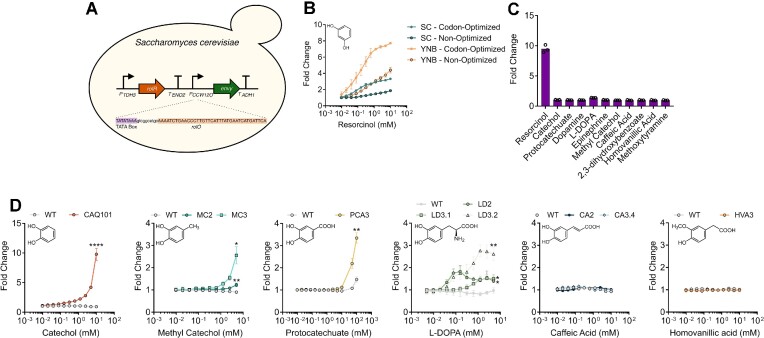Figure 6.
Construction and characterization of wild-type and variant RolR biosensors in Saccharomyces cerevisiae. (A) Design of chromosomally integrated RolR genetic circuit in S. cerevisiae. RolR is expressed from the strong constitutive promoter PTDH3, and Envy GFP is expressed from the PCCW12promoter, which was engineered for resorcinol-responsiveness by inserting 1 copy of rolO downstream of the TATA box. (B) Response of the resorcinol biosensor in S. cerevisiae and tuning of the circuit response by altering codon-optimization status and inoculation media. The sensor exhibited the best induction and EC50 when codon-optimized for yeast expression and when minimal YNB media was used. (C) Response of the WT RolR with all the small molecules included in this study. (D) Dose-response curves of representative variant RolR biosensors compared to WT RolR with catechol, methyl catechol, protocatechuate, L-DOPA, caffeic acid, and homovanillic acid. Data points are mean ± SD, n = 3. Statistical significance was determined by a two-tailed Student's t-test for the data point with the highest fluorescence. ****P < 0.0001; **P < 0.01; *P < 0.05.

